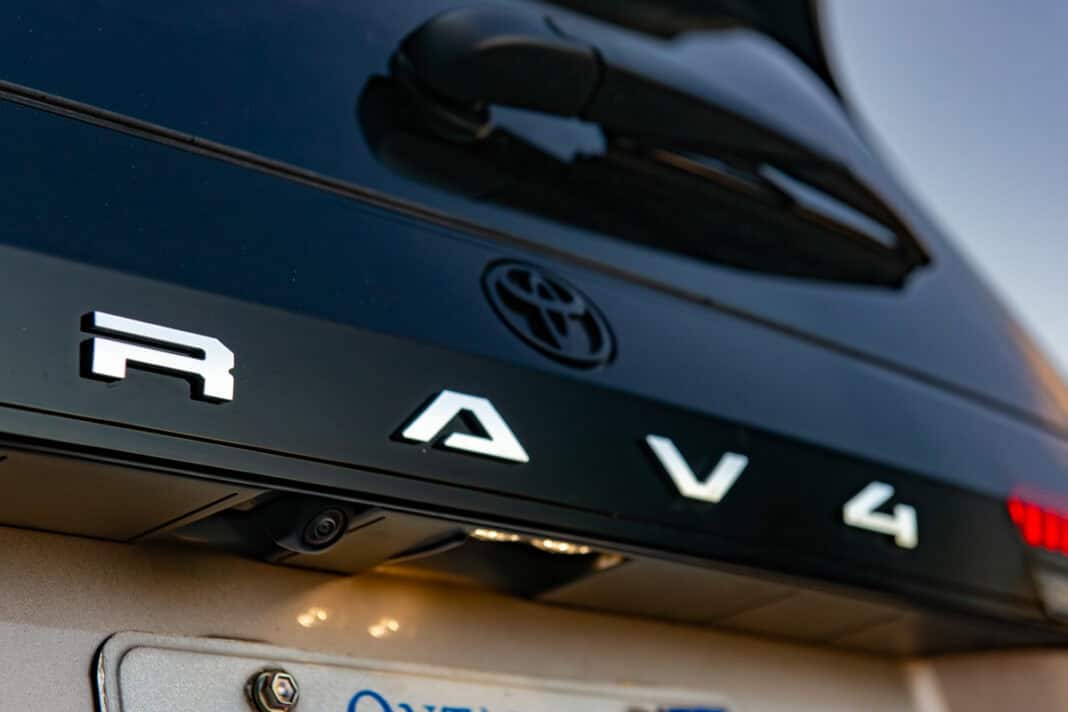You either own a RAV4, know somebody who owns a RAV4, or will undoubtedly see a RAV4 the next time you leave your house. It’s just one of those vehicles, going strong for nearly thirty years. But before it became the best-selling SUV in North America, this little Toyota money-maker began as an idea ahead of its time: a small, car-like utility vehicle with real capability. The formula seems obvious now, but back in the late ’80s and early ’90s, Toyota was effectively inventing an entirely new segment.
Here’s a look at each generation of compact SUV and how it’s progressed.
First Generation (1994–2000): The Original Crossover

The story really starts in 1989 with the RAV-FOUR concept: a compact, lightweight, all-wheel-drive idea that felt more like a hatchback than a traditional SUV. By 1991, Toyota green-lit the project, and a few years later the world saw something genuinely new.
The first-gen RAV4 debuted as a quirky three-door runabout with car-like handling, a lightweight monocoque body, and excellent visibility. Basically, features that would become defining traits of modern crossovers. A five-door model followed, as did a soft-top, and even an early battery-electric RAV4 in select markets (way back in 1997).
The RAV4 reached North America in 1996 and quickly found its footing, giving U.S. and Canadian buyers their first real taste of a small, car-based SUV long before crossovers overtook our garages, roads, and showroom floors. Nearly 1,900 sold by year’s end in Canada alone.
Second Generation (2000–2006): More Refined, More Capable
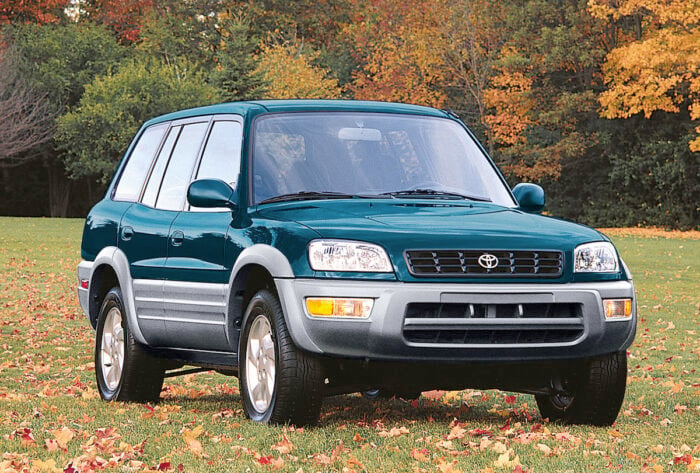
The second-gen RAV4 entered the new millennium with a bigger platform, full-time AWD, and improved suspension, making it smoother both on road and off. Toyota added a more powerful 2.4-litre engine in 2004, and the cabin took a noticeable step up in comfort and quality.
Across North America, the RAV4 adopted a more practical five-door layout as buyers shifted toward family-friendly SUVs. This generation was also the last time you could get a RAV4 with a manual transmission (a turning point as the model moved toward mainstream appeal).
Third Generation (2006–2012): Bigger, Faster, and Built in Canada
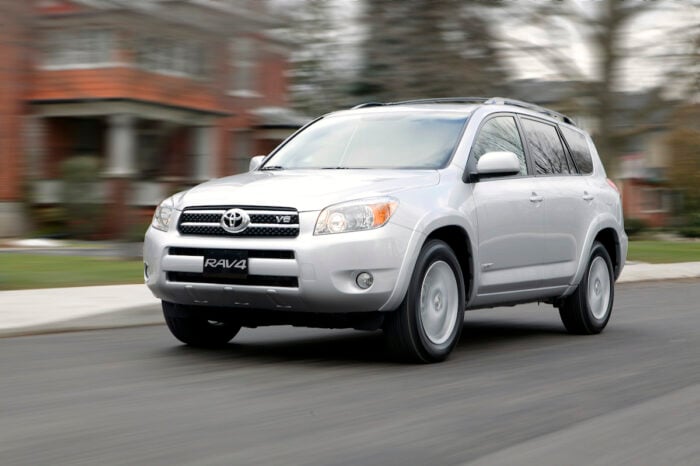
The RAV4 grew significantly for its third generation, especially in North America, where Toyota gave it a long-wheelbase body and an optional third row. And then came the surprise: a 3.5-litre V6 that turned the RAV4 into the quickest Toyota in the lineup at the time.
On November 3, 2008, RAV4 production began at Toyota’s Woodstock, Ontario plant. This was a major milestone for the Canadian auto industry. Toyota also brought back an all-electric RAV4 in 2012, developed with Tesla and sold exclusively in California.
Fourth Generation (2013–2018): Mainstream Hit, Hybrid Arrives
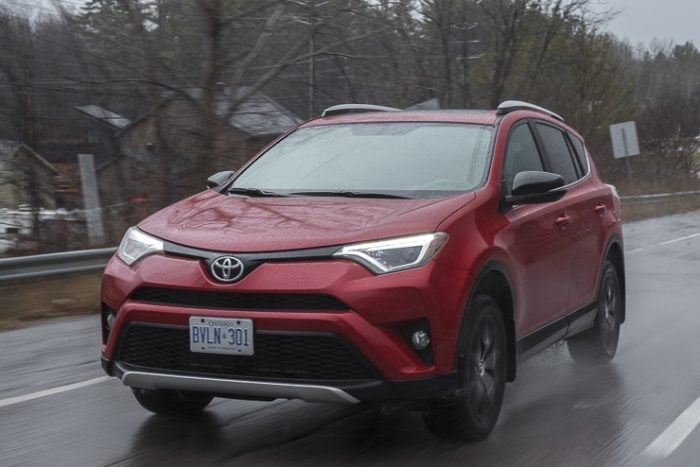
The fourth-gen RAV4 returned to a global standard wheelbase but grew again in size, unlocking 47% more cargo space than before. It also introduced more advanced AWD technology and, in 2016, the first-ever RAV4 Hybrid, including a more sporty SE Hybrid with 18-inch alloy wheels. The hybrid’s combination of fuel efficiency and all-wheel traction quickly set it apart, becoming a key part of the RAV4’s rapidly growing appeal.
Fifth Generation (2019–2025): Tougher, Techier, and a Global Best-Seller

The fifth-generation RAV4 launched for 2019 with sharper, more rugged styling inspired by Toyota’s trucks and SUVs. Underneath, it moved to the TNGA platform (lower, stiffer, lighter) improving handling and ride quality. Plus, a bump in fuel economy for 2019. That same year, Toyota’s Cambridge North plant in Ontario began assembling both gas and hybrid RAV4s, further expanding Canadian production.
2020 saw the debut of the RAV4 Plug-In Hybrid (Prime), the most powerful and efficient RAV4 ever, producing 302 horsepower and shockingly quick acceleration with minimal emissions. By 2020, the RAV4 crossed a massive milestone: 10 million units sold globally. Frankly, few vehicles have shaped the SUV landscape as profoundly.
6th Generation (2026): Electrified Lineup With a Sharper, More Modern RAV4
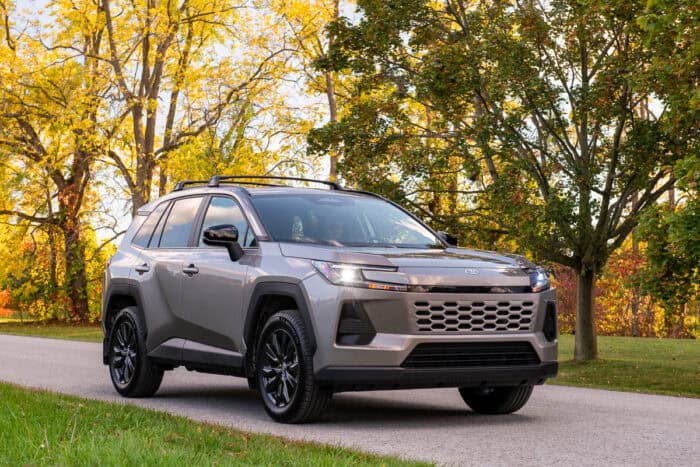
The sixth-generation model arrives for 2026, rewriting the RAV4 playbook: an electrified lineup, meaning every model is now a hybrid or plug-in hybrid, with no gas-only versions. Hybrid models move to Toyota’s latest 5th-gen system with 236 hp, while the PHEV now makes up to 320 hp and delivers roughly 52 miles or 80 km of EV range, along with available DC fast-charging on upper trims.
The outgoing 2025 RAV4 was beginning to show its age. Design-wise, the 2026 RAV4 adopts a tougher, wider stance with Toyota’s new “hammerhead” front-end, refreshed LED lighting, and more distinct trim personalities, including a more rugged Woodland trim and a new GR SPORT performance-leaning model. As usual, we suspect the mid-grade XSE to be the top seller.
Inside, the cabin gets a clean redesign with bigger displays, better materials, an electronic shifter, and Toyota’s new Arene-based software platform powering an upgraded multimedia system and Toyota Safety Sense 4.0.
Takeaway
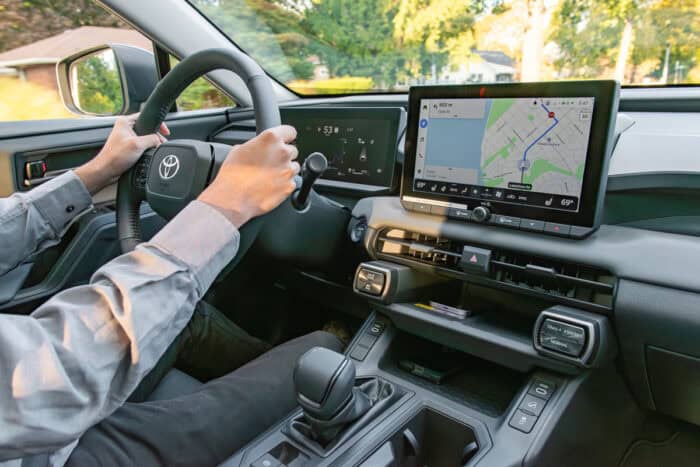
Across five generations, the RAV4 evolved from a quirky experiment into the world’s go-to SUV. It pioneered the crossover before the word even existed, added hybrid tech long before its rivals, and eventually became one of Toyota’s most important vehicles globally. With the next generation already rolling out, the RAV4 story is far from over. But understanding where it came from shows exactly why it’s still the benchmark everyone else is chasing. And the reason my Dad won’t let go of his white 2018 RAV4.

